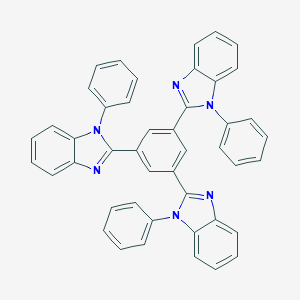Cao Xuetao's team revealed a new mechanism for interferon failure caused by viral infection
-
Last Update: 2020-12-15
-
Source: Internet
-
Author: User
Search more information of high quality chemicals, good prices and reliable suppliers, visit
www.echemi.com
can a virus cause interferon to lose its antiviral function and escape immunodeficiation, causing chronic viral infections? Cao Xuetao, a member of the Chinese Academy of Engineering and president of the Chinese Academy of Medical Sciences, found that viral infections can escape by inhibiting interferon antiviral function in a new way through an E3 ubigan connective enzyme molecule, and published the group's paper today in
magazine.
With the support of the National Natural Science Foundation's Basic Science Research Center Project and the Medical and Health Science and Technology Innovation Project of the Chinese Academy of Medical Sciences, academician Cao Xuetao of the Chinese Academy of Medical Sciences and Dr. Liu Shuo and Associate Professor Jiang Minghong used the high-intensity screening system to provide E3 ubiganic connective enzyme RN. The regulatory role of F family molecules in the natural immune response response of type I interferon was screened, and it was found that several molecules of the RNF family were able to participate in regulating antiviral natural immunity, wherein the E3 ubilin connective enzyme molecule RNF2 was able to significantly inhibit the antiviral function of interferon.
interferon stimulates the target cells, the antiviral immune function is performed by activating the transcription factor STAT1, inducing the expression of a series of interferon stimulating genes. The study found that viral infection can trigger the interaction of RNF2 with STAT1's DNA binding functional domain, promote the polypronin modification of the K33 connection in STAT1 379th bit lysine, thus prompting STAT1 to dissocilate from the DNA it binds to, and ultimately reduce the expression of the interferon stimulating gene downstream. In vivo experiments show that myelin cell-specific defect RNF2 mice are more resistant to multiple viral infections and accompany the expression of antiviral interferon stimulator genes, thus confirming that RNF2 does have the effect of inhibiting interferon antiviral effects.
The results reveal that viral infection can inhibit interferon antiviral function by mobilizing RNF2 molecules, inducing interferon to play an important antiviral function of the important transcription factor STAT1, a new type of K33 polypronin modification, inhibiting the role of transcription factor STAT1. This discovery deepens the understanding of the natural immune regulatory mechanisms of antivirals, and provides new potential targets for the treatment and drug development of viral infections and related inflammatory diseases. (Source: Science.com)
This article is an English version of an article which is originally in the Chinese language on echemi.com and is provided for information purposes only.
This website makes no representation or warranty of any kind, either expressed or implied, as to the accuracy, completeness ownership or reliability of
the article or any translations thereof. If you have any concerns or complaints relating to the article, please send an email, providing a detailed
description of the concern or complaint, to
service@echemi.com. A staff member will contact you within 5 working days. Once verified, infringing content
will be removed immediately.







